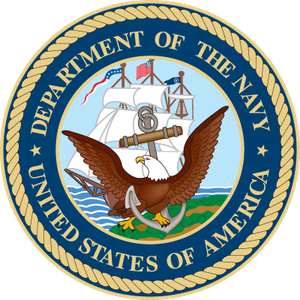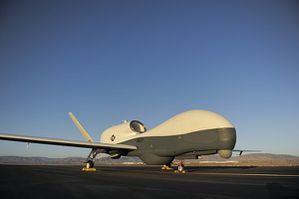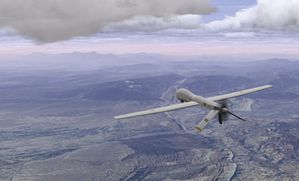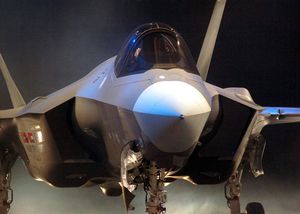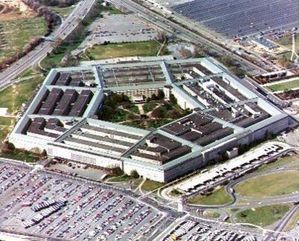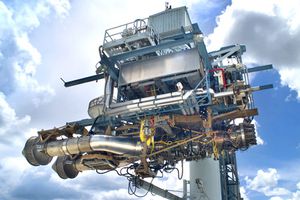OTTAWA, ONTARIO--(Marketwire - 27 fév. 2013)
Aujourd'hui, le Secrétariat de la Stratégie nationale d'approvisionnement en matière de construction navale (SNACN) a tenu une séance d'information technique à l'intention des médias pour faire le point sur les progrès réalisés depuis la signature des accords-cadres il y a un an ce mois-ci.
La Stratégie a été élaborée et elle est mise en œuvre selon les cinq phases suivantes :
- Élaboration de la stratégie Cette phase a été amorcée à l'été 2009 dans le cadre d'un forum sur la construction navale et comprenait des consultations auprès de l'industrie. Elle a donné lieu à l'annonce de la Stratégie en juin 2010.
- Sélection des chantiers navals Un processus concurrentiel a été lancé à l'été 2010 et la date de clôture était le 19 octobre 2011.
- Établissement des relations Cette phase est permanente, mais une étape importante a été franchie lors de la signature des accords-cadres avec les chantiers navals en février 2012.
- Préparation des chantiers et mise au point de la conception Voila où nous en sommes aujourd'hui. Les chantiers navals entreprennent les travaux nécessaires pour être en mesure de construire les navires canadiens de manière efficiente.
- Construction des navires.
La SNACN est maintenant à la quatrième phase, soit celle où les schémas de conception seront achevés. Une approche de type « concevoir puis construire » a été adoptée pour s'assurer que les travaux de conception sont terminés avant de passer à la construction. Cette approche présente un risque plus faible et permet d'accroître l'efficacité du processus de construction. Ces deux phases (conception et construction) seront répétées tout au long de la Stratégie.
À ce jour, le Canada, après négociation, a attribué un certain nombre de contrats aux chantiers navals, et les travaux se poursuivent.
- Le processus de sélection pour les services de conception du brise-glace polaire a pris fin le 17 novembre 2011. On a annoncé l'attribution d'un contrat de 10,8 millions de dollars à l'entreprise STX Canada Marine Inc. de Vancouver (Colombie-Britannique).
- En juillet 2012, un contrat préliminaire de 9,3 millions de dollars a été attribué à l'entreprise Irving Shipbuilding Inc. pour réaliser un examen des plans et des devis existants pour les navires de patrouille extracôtiers de l'Arctique (NPEA) et établir une stratégie d'exécution du projet.
- Le 20 août 2012, le gouvernement a mis à l'essai un modèle à l'échelle de son futur brise-glace polaire, le NGCC John G. Diefenbaker, dans le plus long bassin d'essais dans des conditions de glace au monde. Cette installation unique est située à l'Institut des technologies océaniques du Conseil national de recherche du Canada, à St. John's (Terre-Neuve-et-Labrador).
- Le 21 février 2013, le gouvernement du Canada a annoncé un investissement de 360 millions de dollars pour prolonger la vie utile de la flotte de la Garde côtière canadienne, ce qui permettra à l'industrie de la construction navale canadienne à l'échelle du pays d'en tirer profit et de donner suite à l'engagement du gouvernement de soutenir l'emploi et la croissance.
- Le 22 février 2013, un contrat d'avant-projet de 13,2 millions de dollars pour les nouveaux navires hauturiers de science halieutique (NHSH) a été attribué à l'entreprise Vancouver Shipyards Co. Ltd. Il s'agit d'un contrat dans le cadre d'une série de contrats qui aboutiront à la livraison de nouveaux navires pour la Garde côtière canadienne. La construction des NHSH débutera en 2014.
- L'attribution de deux autres contrats à l'entreprise Vancouver Shipyards a été annoncée le 22 février 2013 ΓöÇun accord initial de 1,4 million de dollars pour les navires de soutien interarmées de la Marine royale canadienne et un contrat de 1,1 million de dollars pour l'examen du concept du brise-glace polaire.
- Les deux entreprises, Vancouver Shipyards et Irving Shipbuilding, entreprennent d'importants travaux de mise à niveau évalués à près de 200 et 300 millions de dollars respectivement. Le gouvernement du Canada n'engage aucuns frais pour ces mises à niveau.
Le gouvernement respecte son engagement de construire des navires au Canada. La SNACN signifiera la création d'emplois à long terme et une croissance économique pour le pays, une stabilité pour l''industrie et de l'équipement essentiel pour les hommes et les femmes de la Marine royale du Canada et de la Garde côtière canadienne.
This text is also available in English.
Document d'information sur les navires de soutien interarmées
Le 14 juillet 2010, le gouvernement du Canada a annoncé qu'il fera l'acquisition de deux navires de soutien interarmées (NSI), avec une option pour un troisième, pour remplacer les pétroliers ravitailleurs d'escadre de la Marine royale canadienne (MRC) à un coût de 2,6 milliards de dollars (taxes comprises). Dans le cadre de cette annonce, le gouvernement a aussi mentionné qu'il prendra en considération tant un nouveau modèle qu'un modèle militaire standard. Le projet de NSI a été intégré à la Stratégie nationale d'approvisionnement en matière de construction navale (SNACN), lors de son élaboration en 2010.
Option d'un nouveau modèle : Le Canada a attribué à BMT Fleet Technology (BMT) un contrat de soutien au génie, à la logistique et à la gestion. Dans le cadre de ce contrat, on a demandé à BMT, le 7 février 2011, d'élaborer un concept initial et de fournir des estimations de coûts pour l'option d'un nouveau modèle de NSI en fonction des exigences de la MRC.
Option de modèle militaire standard : Le 18 janvier 2012, le Canada a attribué un contrat à ThyssenKrupp Marine Systems Canada pour mener des études de conception dans le but de vérifier la possibilité d'adapter le modèle de navires de la classe Berlin EGV II (FGS BONN) existant de façon à ce qu'il réponde aux exigences du Canada. On lui a aussi demandé de fournir une estimation des coûts pour la construction de ce modèle.
Les travaux prévus dans le cadre de ces deux contrats se termineront sous peu, et à partir de ce moment, on effectuera une analyse des options pour sélectionner le modèle des nouveaux NSI.
Cette analyse des options, qui permettra au gouvernement de prendre une décision sur le choix du modèle de NSI, tiendra compte de la capacité, de l'abordabilité et des risques liés à chaque modèle. Dans son analyse, le gouvernement prendra en considération l'information qu'auront fournie les entreprises responsables de l'option du nouveau modèle et de l'option d'un modèle militaire standard, et il tiendra compte de l'avis de Vancouver Shipyards Co. (VSY) [le chantier maritime canadien retenu pour la construction des NSI] et d'un tiers indépendant, First Marine International (FMI), engagé pour la validation de tous les coûts. Par ailleurs, KPMG fournira des conseils d'expert indépendant par rapport à l'élaboration et à l'achèvement du processus global de sélection du modèle. Cette analyse permettra de sélectionner un modèle pour les deux NSI qui est abordable et qui procurera au Canada le meilleur rapport qualité-prix. Le choix de l'option devrait être fait au printemps de 2013.
Dans le cadre de la SNACN et du processus d'approbation gouvernemental obligatoire, le projet de NSI fera l'objet d'une série de vérifications, afin de valider qu'il est possible d'atteindre la capacité requise au sein de l'enveloppe de la capacité financière établie. Le prochain point de vérification fait partie du processus de sélection du modèle. Tel qu'il a été susmentionné, les estimations de coûts relatives aux modèles seront examinées afin de confirmer que le modèle qui sera sélectionné permettra de réaliser un projet abordable.
Après avoir obtenu cette confirmation, le modèle sélectionné sera communiqué à VSY pour le peaufiner de façon à ce qu'on puisse commencer la construction. À ce moment, les estimations cadrent à l'intérieur du budget affecté pour l'achat d'au moins deux navires.
Tout au long du processus, les estimations des coûts de construction seront rajustées jusqu'à ce qu'une estimation fondée soit fournie, laquelle devra confirmer de nouveau que le projet peut être réalisé dans le respect des limites financières. À tout moment dans le cadre de ce processus, les équipes de projet et le chantier maritime peuvent faire des compromis pour ce qui est du coût du modèle afin d'assurer l'abordabilité du projet et de respecter la capacité exigée par la Marine.
Choix de l'équipement
Le 19 octobre 2011, le gouvernement du Canada a sélectionné le chantier maritime VSY, de Seaspan, comme entrepreneur principal pour la construction des navires non destinés au combat du programme de la SNACN.
En tant qu'entrepreneur principal sélectionné pour les navires non destinés au combat, VSY sera responsable de la construction de tous les NSI à son chantier maritime de North Vancouver, en Colombie-Britannique. Dans le contrat subséquent au choix du modèle, VSY sera responsable de l'approvisionnement de l'équipement et des principaux services par l'entremise de fournisseurs sélectionnés au moyen de processus d'appels d'offres concurrentiels. Pour la sélection des fournisseurs, VSY peut inclure des critères essentiels tels que la capacité technique, l'adaptation du produit, le soutien continu du produit, le temps de livraison, le prix et le soutien à l'engagement qu'a pris VSY de générer des retombées industrielles et régionales équivalant à 100 % de la valeur des contrats de NSI.
Les entreprises qui souhaitent devenir fournisseurs dans le cadre du projet de NSI peuvent s'inscrire en ligne à l'adresse suivante :
http://www.seaspan.com/supply_chain_registration.php.
Échéancier de projet*
Budget lié au projet
Le budget de 2,6 milliard de dollars (taxes comprises) lié au projet a été établi au moyen des principes d'établissement des coûts, conformément aux lignes directrices du Conseil du Trésor. Il comprend un fonds de prévoyance de 15 % (l'équivalent d'environ 300 millions de dollars) et un facteur d'indexation de 2,7 % pour la construction des navires. À la suite de l'annulation du premier processus d'approvisionnement visant les NSI en 2008, le ministère de la Défense nationale (MDN) a entrepris une analyse des options en vue d'étudier les meilleures façons de répondre aux besoins du Ministère en ce qui a trait aux NSI. L'analyse a mené à l'établissement d'une nouvelle estimation des coûts et à la révision de l'énoncé des besoins opérationnels en vue de l'acquisition de deux NSI. Le budget lié au lancement du nouveau processus d'acquisition des NSI, qui a été lancé, a été tiré directement du budget d'approvisionnement initial. Par contre, deux rajustements importants ont été apportés afin de tenir compte de l'indexation et des taxes. D'abord, une modification liée à l'indexation des coûts a été appliquée aux coûts de construction des navires. La correction apportée à l'indexation, qui visait à comptabiliser la perte du pouvoir d'achat pour la main-d'œuvre et l'équipement de construction des navires, a été fondée sur le Modèle économique du MDN et a ensuite été validée par le Secrétariat du Conseil du Trésor avant d'être approuvée. Les facteurs d'indexation exacts variaient selon les très nombreuses catégories distinctes de coûts liés à la construction de navires, mais le taux moyen appliqué était de 2,7 % par année. En plus de ce rajustement visant à comptabiliser l'indexation des coûts, une deuxième modification a été apportée au budget d'acquisition des NSI afin de tenir compte des changements liés à l'application des exigences fiscales nationales.
Établissement du coût du cycle de vie
Dans le cadre du processus d'approvisionnement, le MDN fournit des estimations des coûts liés au soutien en service, ainsi que des coûts liés au personnel et au fonctionnement de la flotte au cours de son cycle de vie. Ces estimations sont orientées par le travail effectué au cours du processus de définition et sont régulièrement mises à jour pour tenir compte des renseignements les plus précis disponibles.
Le soutien en service comprend des travaux visant l'équipement comme la modification technique, la gestion de l'obsolescence, l'entretien, la réparation, la mise à l'essai, la mise à niveau, l'approvisionnement ou la fourniture de pièces de rechange, la tenue de documentation et la formation. Les estimations des coûts du NSI sont rajustées au fur et à mesure que les projets évoluent de la conception à la production et à la mise en service. La confiance en ces estimations augmente avec le temps. En ce qui concerne le projet de NSI, nos estimations préliminaires indiquent que :
- L'estimation du coût total de l'achat des deux navires est de 2,6 milliards de dollars.
- L'estimation sur 30 ans des coûts liés au soutien en service et au personnel est d'environ 1,9 milliards de dollars pour deux navires. Ces estimations peuvent faire l'objet de rajustement lorsque le choix de l'équipement des NSI sera effectué et que l'élaboration et les négociations du contrat des NSI auront eu lieu.
- L'estimation sur 30 ans des coûts liés au personnel et au fonctionnement s'élève à 2,6 milliards de dollars. Cette estimation est fondée sur la méthodologie d'évaluation actuelle du MDN, sur une projection du profil opérationnel nominal et sur la taille de l'équipage.
Ainsi, les estimations préliminaires des coûts liés au cycle de vie des NSI s'élèvent à 7,1 milliards de dollars.
Ses estimations seront rajustées au fur et à mesure que la conception évolue, que l'équipement est choisi et que les navires sont construits.


